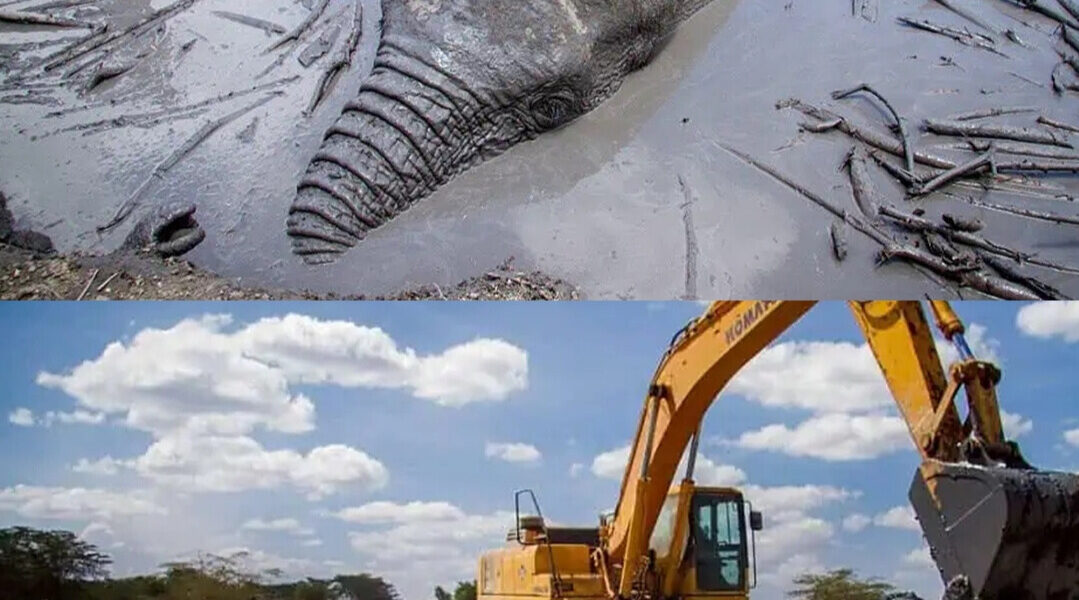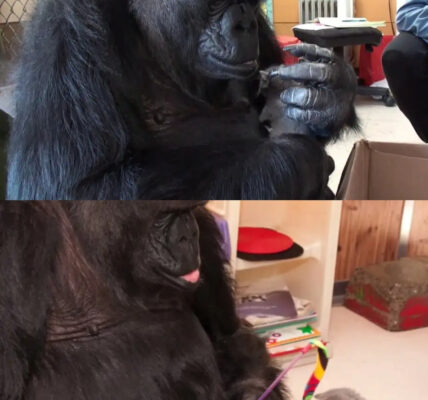The Elephant in the Pit

The sun had barely begun to rise over southern Kenya when farmers near Makindu stumbled upon a sight that made their hearts sink. A young elephant, caked in mud, thrashed and struggled inside a deep pit. Its massive body, weighing up to seven tonnes, had slipped into the man-made well while searching desperately for water in the midst of a punishing drought.

Hour after hour, the elephant tried to climb the slick, clay walls, but each attempt ended the same way — sliding back down in exhaustion. By the time help was called, it had been trapped for nearly twelve hours. Its trumpets of distress echoed across the farmland, a cry of desperation from one of nature’s most majestic creatures.
An Unlikely Alliance

The farmers who found the elephant faced a dilemma. For years, elephants had been both neighbors and adversaries. During dry seasons, herds often wandered into farmland, trampling crops and sparking conflict. Yet here was a helpless animal, fighting for its life. And so, compassion overcame resentment.
They called for help. Soon, rangers from the Kenya Wildlife Service and members of the Big Life Foundation arrived, determined to save the animal. But no matter how they tried, the slick mud walls were too steep, too dangerous.
That’s when an unexpected ally appeared — a construction crew from the China Road and Bridge Corporation, working nearby. With them came the one tool that could tip the balance: a digger.
The Rescue

Carefully, slowly, the digger’s arm reached into the pit, carving out an escape route. Every move had to be precise — one wrong shift could injure the elephant. Conservationist Jeremy Goss, who documented the rescue, described the tense moments:
“It was heartbreaking to watch it struggle for hours. The elephant had wandered into farmland to drink from the well because of the extreme drought. But the construction crew’s intervention was a game-changer.”

At first, the elephant was hesitant, too exhausted to believe freedom was possible. The digger nudged gently, guiding it step by step. Finally, with one last surge of strength, the young giant heaved itself up and out of the pit.
Back to the Wild

Cheers erupted from the gathered crowd. Farmers, rangers, construction workers, and conservationists — people who so often stood on opposite sides — had come together for a single cause: to save a life.
The elephant, caked in mud but otherwise unharmed, stood for a moment in silence, as if trying to understand what had just happened. Then, guided by rangers in vehicles and a helicopter overhead, it was led back toward the safety of Chyulu Hills National Park, away from the dangers of farmland and human settlement.
A Lesson in Coexistence

Jeremy Goss reflected on what had unfolded: “Humans caused the problem by creating the well, but they also saved the elephant’s life. Watching it walk free was a powerful reminder of what can happen when people come together to protect wildlife.”
It was more than a rescue. It was a story of coexistence, of a fragile peace between people and the creatures with whom they share the land. In a region where drought and survival often put man and animal at odds, this day was different.

A day when compassion triumphed.
A day when strangers united to pull one elephant back from the brink.
And as the young elephant disappeared into the vast green expanse of Chyulu Hills, it carried with it not just the weight of mud, but the fragile hope that people and wildlife might still find ways to endure — together.




